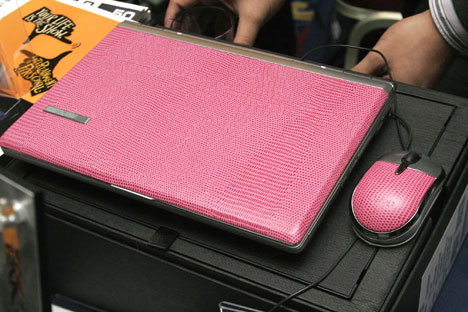
Details of AMD's next generation Radeon hit the web
Newly created site Level 505 has leaked benchmarks and specifications of AMD’s upcoming ATI R600 graphics processor. The upcoming graphics processor is expected to launch in January 2007 with an expected revision arriving in March 2007. These early specifications and launch dates line up with what DailyTech has already published and are present on ATI internal roadmaps as of workweek 49.
Preliminary specifications from Level 505 of the ATI R600 are as follows:
- 64 4-Way SIMD Unified Shaders, 128 Shader Operations/Cycle
- 32 TMUs, 16 ROPs
- 512 bit Memory Controller, full 32 bit per chip connection
- GDDR3 at 900 MHz clock speed (January)
- GDDR4 at 1.1 GHz clock speed (March, revised edition)
- Total bandwidth 115 GB/s on GDDR3
- Total bandwidth 140 GB/s on GDDR4
- Consumer memory support 1024 MB
- DX10 full compatibility with draft DX10.1 vendor-specific cap removal (unified programming)
- 32FP [sic] internal processing
- Hardware support for GPU clustering (any x^2 [sic] number, not limited to Dual or Quad-GPU)
- Hardware DVI-HDCP support (High Definition Copy Protocol)
- Hardware Quad-DVI output support (Limited to workstation editions)
- 230W TDP PCI-SIG compliant
This time around it appears AMD is going for a different approach by equipping the ATI R600 with less unified shaders than NVIDIA’s recently launched GeForce 8800 GTX. However, the unified shaders found on the ATI R600 can complete more shader operations per clock cycle.
Level505 claims AMD is expected to equip the ATI R600 with GDDR3 and GDDR4 memory with the GDDR3 endowed model launching in January. Memory clocks have been set at 900 MHz for GDDR3 models and 1.1 GHz for GDDR4 models. As recent as two weeks ago, ATI roadmaps had said this GDDR3 launch was canceled. These same roadmaps claim the production date for R600 is February 2007, which would be after a January 22nd launch.
Memory bandwidth of the ATI R600 is significantly higher than NVIDIA’s GeForce 8800-series. Total memory bandwidth varies from 115GB/s on GDDR3 equipped models to 140GB/s on GDDR4 equipped models.
Other notable hardware features include hardware support for quad DVI outputs, but utilizing all four outputs are limited to FireGL workstation edition cards.
There’s also integrated support for multi-GPU clustering technologies such as CrossFire too. The implementation on the ATI R600 allows any amount of ATI R600 GPUs to operate together in powers of two. Expect multi-GPU configurations with greater than two GPUs to only be available for the workstation markets though.
The published results are very promising with AMD’s ATI R600 beating out NVIDIA’s GeForce 8800 GTX in most benchmarks. The performance delta varies from 8% up to 42% depending on the game benchmark.
When DailyTech contacted the site owner to get verification of the benchmarks, the owner replied that the benchmark screenshots could not be published due to origin-specific markers that would trace the card back to its source -- the author mentioned the card is part of the Microsoft Vista driver certification program.
If Level505's comments seem a little too pro-ATI, don't be too surprised. When asked if the site was affiliated in any way to ATI or AMD, the owner replied to DailyTech with the statement that "two staff members of ours are directly affiliated with AMD's business [development] division."




 Intel plans to launch three quad-core processors on Monday, covering two Xeons for lower-end servers and one mainstream model for desktop computers, sources familiar with the plan said.
Intel plans to launch three quad-core processors on Monday, covering two Xeons for lower-end servers and one mainstream model for desktop computers, sources familiar with the plan said.
 Business travellers will soon have another option for connectivity when they are on the road. Start-up Autonet Mobile and car rental giant Avis are partnering to offer renters a device that will provide laptop users with WiFi access on the road. You can take "on the road" literally in this case, as the device is designed to create a WiFi hot spot accessible from within 100 feet of the car.
Business travellers will soon have another option for connectivity when they are on the road. Start-up Autonet Mobile and car rental giant Avis are partnering to offer renters a device that will provide laptop users with WiFi access on the road. You can take "on the road" literally in this case, as the device is designed to create a WiFi hot spot accessible from within 100 feet of the car. 
